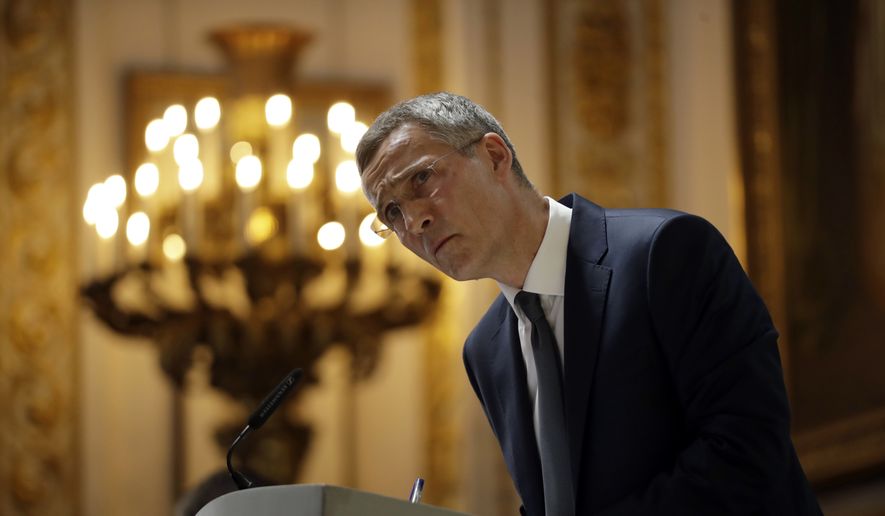About 20,000 U.S. troops will soon begin flooding into Europe as part of a massive, months-long military exercise that has been compared to the massive drills of the Cold War era, drills that were meant to help NATO forces beat back a hypothetical invasion from the Soviet Union.
Defender-Europe 20 is the largest military deployment to Europe in 25 years, military officials say. It is scheduled to run from April to July with operations occurring throughout parts of Germany, along with countries like Poland and the Baltic States that once were part of the Warsaw Pact. About 17,000 troops from 18 other NATO countries will take part in the U.S.-led division-level exercise.
NATO officials insist that no individual nation in the target of the massive exercise, but private analysts say the Kremlin will be taking copious notes as the forces deploy.
“Readiness is not only about having the right forces and capabilities in place throughout the theater. It’s about exercising our ability to quickly receive forces with our own and those of our allies and partners,” Lt. Gen. Christopher Cavoli, commander of U.S. Army Europe, said in a statement. “This ability is critical in projecting force at a moment’s notice. Our readiness reassures our allies and deters potential adversaries.”
With its history, its location on Russia’s doorstep, and its strong support of U.S. military operations in the region since becoming a NATO member, Poland is expected to play a major role in Defender-Europe 20.
“This exercise is not just symbolic. It gets to the heart of what we mean when we talk about collective European security,” said Georgette Mosbacher, U.S. Ambassador to Poland. “In a crisis, NATO must be able to respond as quickly as possible. Defender-Europe 20 simply could not happen without Poland.”
Bradley Bowman, senior director of the Center on Military and Political Power at the Foundation for Defense of Democracies (FDD), said he was asked repeatedly on a trip to Germany late last year whether the Trump administration still had an interest in the security of Europe. He said Russia President Vladimir Putin — or any other potential adversary — will wonder if the U.S. is militarily capable of rapidly sending a large number of combat troops to Europe, and whether Washington has will to do so.
Defender-Europe 20 is “an opportunity for us to signal the political resolve of NATO,” said Mr. Bowman, a former Army officer and national security senate staffer.
The U.S. has been rotating troops through Europe on a regular basis since Russia seized Crimea from Ukraine in 2014. It has conducted several short-term exercises, such as Saber Guardian, in Bulgaria, Hungary and Romania. But Saber Guardian focuses on tactical missions such as vehicle road marches, river crossings and air assaults. Planners say Defender-Europe 20 will be a strategic, high-level mission with a far greater sweep.
While Russian activities like its conflicts with Ukraine and Georgia may have prompted U.S. officials to dust off their Cold War plans for countering the former USSR, NATO officials insist Moscow is not considered the enemy for the exercise.
“Defender Europe is not directed against any particular country,” NATO Secretary General Jens Stoltenberg told a European Parliament hearing late last month. “This defensive exercise demonstrates the ability to rapidly move a large force from the United States to Europe to help protect other NATO allies, if needed.”
He added NATO nations need to stand together and address any common challenges.
“Russia has every right to feel safe within its borders but so do our members states,” Mr. Stoltenberg said. “The U.S. is not ‘leaving’ Europe. The United States is actually increasing their military presence in Europe.”
Some of the soldiers coming from the U.S. will draw their vehicles — which includes a variety of vehicles, like Humvees and M1 Abrams tanks — from one of five sites throughout Europe known as Army Pre-positioned Stocks. Army officials estimate about 13,000 pieces of equipment will be issued for the war games.
Analysts say Russian leaders are likely to have as much interest in the supply and transportation end of the exercise as in any particular troop maneuvers.
President Trump was clearly no fan of NATO on the campaign trail but has implemented policies such as increased funding for the military and supplying Ukraine with actual firepower that was a major change from his predecessor.
“His administration has dramatically improved U.S. military readiness. By and large, there’s much to applaud,” the FDD’s Mr. Bowman said.
• Mike Glenn can be reached at mglenn@washingtontimes.com.




Please read our comment policy before commenting.